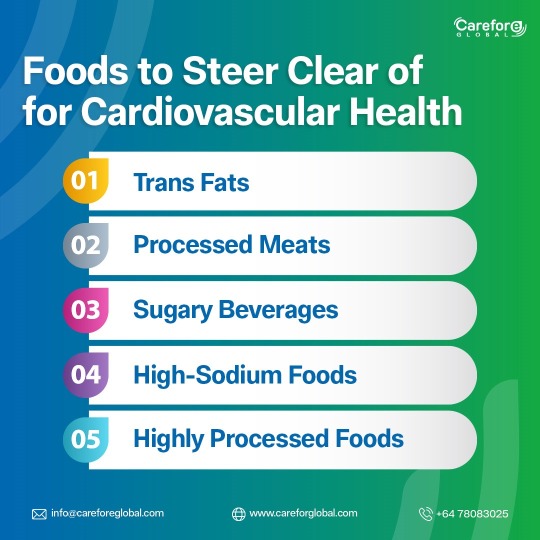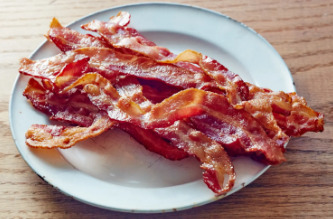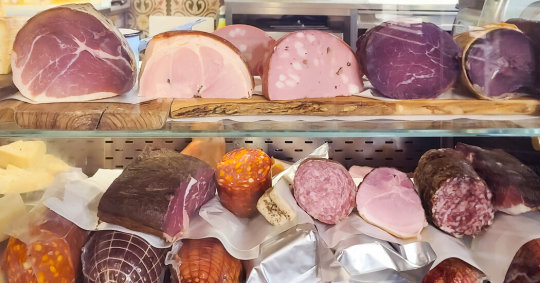#ProcessedMeats
Explore tagged Tumblr posts
Text
L'Industria della Mortadella a Bologna: Una Tendenza in Crescita e Come la SEO Può Favorire le Attività Locali
L'industria della mortadella sta registrando una crescita significativa, trainata dal cambiamento delle preferenze dei consumatori verso prodotti di carne pronti da mangiare e più convenienti. La mortadella, un salume con profonde radici culturali in Italia, si è evoluta per soddisfare le esigenze moderne. Dalle ricette tradizionali alle alternative più salutari, il settore sta rispondendo alle necessità di un consumatore sempre più attento alla salute e alla praticità. Questo blog esplora la crescita dell'industria della mortadella e propone strategie SEO per aiutare le aziende locali di Bologna ad attrarre più clienti.
Comprendere la Crescita dell'Industria della Mortadella
1. La Convenienza è la Chiave
La domanda di opzioni alimentari pronte da mangiare e pratiche è ai massimi livelli. La mortadella si inserisce perfettamente in questa tendenza. È un prodotto versatile, comunemente utilizzato in panini, wrap e persino come spuntino veloce. Gli stili di vita frenetici, soprattutto nelle aree urbane, hanno spinto molti consumatori a scegliere salumi che richiedono poca o nessuna preparazione, rendendo la mortadella una scelta ideale.
2. Innovazioni per Prodotti più Salutari
Tradizionalmente considerata un alimento ricco di sodio e grassi, la mortadella si sta adattando ai nuovi trend salutistici. I produttori stanno introducendo alternative più sane, tra cui:
Opzioni a basso contenuto di grassi e sodio
Prodotti biologici e senza conservanti
Alternative vegetali alla mortadella
Queste innovazioni rispondono alla crescente richiesta di alimenti più sani e sostenibili.
3. Globalizzazione e Fascino Culturale
La mortadella ha origini italiane, tradizionalmente realizzata con carne di maiale e aromatizzata con spezie. Tuttavia, ha acquisito popolarità in tutto il mondo. Con il mercato internazionale che apprezza sempre di più la mortadella, le aziende bolognesi hanno l'opportunità di promuovere sia i prodotti locali che quelli destinati all'export.
Come la SEO Può Aiutare le Aziende Bolognesi a Sfruttare la Crescita del Settore
Con l'espansione del mercato della mortadella, le aziende locali di Bologna possono sfruttare la SEO (Search Engine Optimization) per attrarre più clienti e distinguersi dalla concorrenza. Ecco alcune strategie per far crescere il tuo business nella carne lavorata:
1. Ottimizza il Tuo Sito Web per la Ricerca Locale
La SEO locale è essenziale per le aziende che vogliono attrarre clienti in una determinata area geografica. Per i produttori di mortadella a Bologna, questo significa:
Google My Business: Crea e ottimizza il tuo profilo su Google My Business per aumentare la visibilità nei risultati di ricerca locale e su Google Maps.
Parole Chiave Locali: Utilizza parole chiave geolocalizzate come "Mortadella a Bologna" o "Prodotti di mortadella italiani vicino a me" per comparire nelle ricerche dei clienti locali.
Recensioni dei Clienti: Incoraggia i clienti soddisfatti a lasciare recensioni positive su Google, Yelp e Facebook per migliorare la credibilità del tuo business.
2. Content Marketing con Approfondimenti di Esperti
Per costruire autorevolezza e fiducia, crea contenuti informativi e coinvolgenti sull’industria della mortadella, come:
Ricette: Condividi modi creativi per usare la mortadella in piatti come panini, paste e insalate. Questo ti aiuterà a posizionarti come esperto nel settore.
Tendenze di Mercato: Scrivi articoli sulle innovazioni nel settore della mortadella, incluse le alternative più sane e gli sforzi per la sostenibilità.
Dietro le Quinte: Mostra il processo di produzione della tua mortadella, evidenziando la qualità degli ingredienti, i metodi tradizionali e il rispetto delle norme sulla sicurezza alimentare.
3. Sfrutta i Social Media per la Brand Awareness
Piattaforme come Facebook, Instagram e TikTok sono strumenti potenti per promuovere i tuoi prodotti a base di mortadella. Condividi foto appetitose, video del processo di produzione e testimonianze dei clienti. I social media sono un ottimo modo per interagire con la comunità locale e aumentare la notorietà del marchio.
4. Concentrati su E-E-A-T (Esperienza, Competenza, Autorevolezza e Affidabilità)
Google dà valore ai contenuti di alta qualità e affidabili. Per rispettare gli standard E-E-A-T:
Fornisci Informazioni Esperte: Condividi approfondimenti sulla storia della mortadella, i suoi benefici nutrizionali e le pratiche sostenibili del settore.
Mostra Recensioni e Testimonianze: Le recensioni positive dei clienti e il supporto di critici gastronomici o esperti del settore aumentano la credibilità.
Trasparenza e Autenticità: Metti in evidenza il tuo impegno per la qualità, l’uso di ingredienti locali e il rispetto degli standard di sicurezza alimentare.
5. Usa i Dati Strutturati per Migliorare la Visibilità
L’implementazione di dati strutturati (Schema Markup) sul tuo sito web aiuta i motori di ricerca a comprendere meglio il tuo contenuto, migliorando il posizionamento nei risultati di ricerca. Puoi utilizzare i dati strutturati per:
Schede Prodotto: Includi dettagli sui tuoi prodotti a base di mortadella, come ingredienti, prezzi e disponibilità.
Attività Locale: Aggiungi dati strutturati relativi alla tua azienda, come indirizzo, orari di apertura e contatti.
6. Migliora la Velocità del Sito e l’Usabilità Mobile
Sempre più consumatori fanno acquisti e ricerche da dispositivi mobili. Assicurati che il tuo sito sia veloce e ottimizzato per dispositivi mobili. Google premia i siti con un’esperienza utente fluida, quindi ottimizzare la versione mobile è essenziale per attrarre clienti locali e internazionali.
7. Link Building con Partner Locali
Ottenere backlink da fonti locali affidabili, come food blogger italiani, associazioni di settore e testate giornalistiche, può migliorare l’autorevolezza e il ranking del tuo sito web. Puoi anche collaborare con influencer gastronomici per recensioni dei tuoi prodotti o per raccontare la tua storia aziendale.
Conclusione
L'industria della mortadella è in piena espansione grazie alla crescente preferenza dei consumatori per prodotti più pratici e salutari. Come imprenditore a Bologna, sfruttare la SEO è un modo efficace per attrarre clienti locali e internazionali, aumentare la visibilità del brand e posizionarti come un punto di riferimento nel settore.
Ottimizzando la ricerca locale, creando contenuti di valore e rafforzando la tua presenza online, potrai distinguerti dalla concorrenza e cogliere tutte le opportunità offerte da questo mercato in crescita.
#BolognaMeat#ProcessedMeats#BolognaItaly#ReadyToEat#HealthyEating#FoodTrends#LocalSEO#ItalianCuisine#SustainableFood#FoodIndustry#SEOforBusiness#BolognaFood#FoodInnovation#FoodBloggers#BolognaBusiness#ItalianFoodLovers#ConvenientMeals#LocalFoodBusiness#SEOforLocalBusiness#EatLocalBologna
1 note
·
View note
Text

Here are five foods to avoid for cardiovascular health:
#CardiovascularHealth#HeartHealth#HealthyEating#AvoidTransFats#ProcessedMeats#SugaryBeverages#HighSodiumFoods#AvoidProcessedFoods#HealthyDiet#HeartDiseasePrevention
0 notes
Text
#CollagenCasing#SausageCasing#MeatProcessing#FoodPackaging#EdibleCasing#ProcessedMeat#CollagenSolutions#FoodIndustryTrends#SustainablePackaging#MeatIndustry#ProteinCasing#FoodTech#CasingMarket
0 notes
Text
#ArtificialCasings#SausageCasings#MeatProcessing#ProcessedMeat#EdibleCasings#NonEdibleCasings#FoodIndustry#MarketGrowth#ConvenienceFood#ProteinConsumption#CollagenCasings#CelluloseCasings#PlasticCasings#CasingsMarketForecast#GlobalFoodTrends#MeatIndustry#SustainablePackaging#IndustrialFoodProduction#CasingsManufacturing#MarketDemand
0 notes
Text
Bacon Consumption Trends: A Comprehensive Market Overview
The global bacon market size is expected to reach USD 84.40 billion by 2030, growing at a CAGR of 2.7% from 2024 to 2030, according to a new report by Grand View Research, Inc. Consumer preferences and dietary trends play a significant role in driving demand for bacon. As bacon evolves into a popular ingredient in various cuisines across the globe, its consumption has risen. Moreover, the increased popularity of ketogenic and other high-protein, low-carbohydrate diets has further bolstered the demand for bacon, considering its high fat and protein content. This surge in consumer demand has prompted producers to ramp up production and innovate with bacon-infused products, thus expanding its presence in the market.

Moreover, innovation in product offerings and packaging solutions has played a crucial role in making bacon more accessible and convenient for consumers. Manufacturers have introduced a wide range of bacon varieties, including low-sodium, nitrate-free, and flavor-infused options, catering to the health-conscious segment and those with specific dietary preferences. The advent of ready-to-eat and easy-to-cook bacon products has simplified consumption, making it appealing to a broader audience with busy lifestyles.
The expansion of retail and online distribution channels is another crucial factor contributing to the growth of the market. The availability of bacon products across various retail formats, from supermarkets and hypermarkets to specialty gourmet stores, has improved consumer accessibility. E-commerce platforms and direct-to-consumer sales models have also made it easier for smaller, niche producers to reach a global customer base, fueling competition and driving innovation within the market.
For More Details or Sample Copy please visit link @: Bacon Market Report
Bacon Market Report Highlights
Regular bacon possess a share of 61.8% in 2023, owing to its versatility in culinary applications and distinctive savory flavor, which is cherished in numerous cuisines worldwide. Additionally, trends such as the ketogenic diet, which emphasizes high-fat, low-carb foods, have further bolstered its popularity.
Ready-to-eat bacon is expected to witness a CAGR of 3.4% during 2024 to 2030. The demand for ready-to-eat bacon is primarily driven by the convenience it offers to consumers looking for quick and easy meal options. Additionally, the growing trend of incorporating protein-rich foods into one's diet has further propelled its popularity.
The distribution of bacon through foodservice channel possesses a share of 58.4%. The growing consumer appetite across all ages for ready-to-eat and ready-to-cook meat products, particularly bacon, is pushing its availability through foodservice outlets. Quick-service eateries and food venues are adding bacon to their offerings to cater to those looking for convenient dining options.
The distribution of bacon through retail channel anticipated to witness a CAGR of 2.9%. This can be attributed to rising consumer demand for convenient and diverse options, including specific types such as low-calorie or gluten-free bacon. Retailers strategically place and promote bacon products in supermarkets/hypermarkets and specialty stores to cater to these evolving consumer preferences, ultimately boosting sales through the retail channel.
Europe held a market share of 31.4% in 2023. The market in Europe is boosted by the growing per capita consumption of pork and the popularity of processed pork products such as bacon. This increase is supported by tariff reductions from free trade agreements enhancing the demand for EU pork.
Asia-Pacific is expected to grow at a CAGR of 3.2% during 2024 to 2030, due to the increasing adoption of more Western-style diets, which is driving up the demand for bacon as a popular choice for breakfast and cooking purposes.
Gain deeper insights on the market and receive your free copy with TOC now @: Bacon Market Report
We have segmented the global bacon market based on type, distribution channel, and region.
#BaconMarket#MeatIndustry#FoodTrends#BaconLovers#PorkIndustry#ProcessedMeat#GlobalFoodMarket#FoodProduction#MeatConsumption#MarketAnalysis#FoodServiceIndustry#ConsumerTrends#SustainableMeat#BaconDemand#PlantBasedAlternatives
0 notes
Text
Research Links Red Meat Consumption with Increased Risk of Type 2 Diabetes

Research published in The Lancet Diabetes & Endocrinology has uncovered links between red meat consumption and a risk of type 2 diabetes. This study was analyzed from the data of nearly 2 million participants across 20 countries. https://twitter.com/MRC_Epid/status/1826167393728516113

Also Read: The Hidden Dangers of Stealthy Saturated Fats and Sugars The first study published in The Lancet Diabetes and Endocrinology involved meta-analysis of data from nearly two million adults across 31 studies conducted in 20 countries including the United States various European nations and parts of Asia. Participants were monitored for an average of 10 years during which their diets and health outcomes were closely examined. The research revealed that consuming just 1.8 ounces of processed meat daily such as a medium-sized sausage or two to three slices of bacon was associated with a 15% increase in the risk of developing Type 2 diabetes. Similarly a daily intake of 3.5 ounces of unprocessed red meat, equivalent to a small steak was linked to a 10% increased risk. The data also suggested that eating poultry might be associated with an 8% increased risk of Type 2 diabetes. This finding was less consistent and was only significant in European populations indicating the need for further research. Regular consumption of processed meats such as ham, sausages and bacon, is strongly associated with a higher risk of developing type 2 diabetes. Specifically consuming 50 grams of processed meat per day is linked to a 15% increased risk of type 2 diabetes over a decade. Eating 100 grams of unprocessed red meat daily is associated with a 10% higher risk of type 2 diabetes. The study also examined poultry consumption, finding that eating 100 grams of poultry daily is associated with an 8% increased risk of type 2 diabetes. Red meat and processed meats are typically high in saturated fats, which have been associated with increased insulin resistance. People who consume large amounts of meat may also have diets that are low in fruits, vegetables and other healthful foods, which are essential for maintaining a healthy body weight and reducing diabetes risk. The method of cooking meat at high temperatures through frying or grilling can lead to the formation of harmful compounds that cause cell damage, inflammation and further insulin resistance. A critical factor highlighted in the studies is the role of heme iron, a type of iron found in red meat. High levels of heme iron intake were linked to a 26% increased risk of developing Type 2 diabetes. Heme iron may contribute to the disease by increasing inflammation and damaging the pancreas, which is critical for insulin production. https://twitter.com/YouGov/status/1826281916607373751 Also Read: Cholera Outbreak in Sudan has Killed At Least 22 People Processed meats include products like bacon, sausages and deli meats, showed a stronger and more consistent association with increased diabetes risk than unprocessed meats. This difference may be due to the presence of preservatives, high sodium content and other additives in processed meats. Experts recommend minimizing the consumption of processed meats as much as possible, viewing them as occasional indulgences rather than dietary staples. The consumption of red meat and processed meats has been linked to a higher risk of heart disease, certain types of cancer and premature death. With over 400 million people globally diagnosed with Type 2 diabetes, a condition that is a leading cause of complications such as blindness, kidney failure, heart attacks, strokes and limb amputations. While it is not necessary to eliminate red meat entirely from the diet, experts suggest that moderation is key. Consuming one or two servings of red meat per week is likely to be safe for most individuals. A shift from a meat-centric diet to one rich in plant-based foods such as whole grains, fruits, vegetables, legumes, nuts and seeds is strongly recommended. These foods have been associated with a lower risk of Type 2 diabetes and other chronic diseases. The studies suggest that even small reductions in meat consumption can have an huge impact on health outcomes. Reducing daily intake of red meat by just 20 grams could lower the risk of diabetes. The intake of saturated fats and harmful compounds formed during high-temperature cooking are primary contributors to increased insulin resistance, which is a precursor to Type 2 diabetes. Heme iron in red meat has been shown to trigger inflammatory responses that can damage cells in the pancreas leading to impaired insulin production and an increased risk of diabetes. Processed meats contain nitrates and nitrites, which can contribute to oxidative stress and cellular damage. Health experts advocate for a diet high in vegetables, fruits, nuts and legumes, which may provide protective benefits against type 2 diabetes. Replacing red meat and processed meats with healthier alternatives like poultry or plant-based proteins is recommended. https://twitter.com/PlantBasedNews/status/1826228368754287086 Also Read: WHO Declares Mpox Global Health Emergency for Second Time in 2 Years
Top Sources Related to Research Links Red Meat Consumption with Increased Risk of Type 2 Diabetes (For R&D)
The Guardian: Two slices of ham a day can raise type 2 diabetes risk by 15%, research suggestsCambridge-led study of 2m people globally is most comprehensive evidence yet of red meat link to diabetes CNN News:

There is a link between the meat you eat and a chronic disease, according to new research | CNNMany people are trying to cut back on red and processed meat for heart health or environmental reasons. A new global study shows another good reason. New York Times:

Eating Meat Is Linked With Diabetes Risk, New Studies SuggestThe research builds on previous findings connecting red and processed meats with Type 2 diabetes. New Scientist:

Does eating meat really raise your risk of type 2 diabetes?Red and processed meat, and even poultry, seem to raise the risk of developing type 2 diabetes, according to a study of nearly 2 million adults, but not everyone is convinced New York Post:

Red and processed meats linked to Type 2 diabetes risk: new studyMaybe don’t go ham on the ham. BBC News:

Doctors cast doubt on ham-sandwich diabetes warningA study of nearly two million people finds a link with processed meats - but experts say it should not cause panic. Read the full article
0 notes
Text
Europe Sausage Casings Market Projected to Reach $2.72 Billion by 2030

Meticulous Research®—a leading global market research company, published a research report titled, ‘Europe Sausage Casings Market by Type (Artificial Casings, Natural Casings), Application (Animal Meat Sausages, Vegan Sausages), Distribution Channel (Offline, Online), End User (Food Processors, Retailers), and Country - Forecast to 2030.’
According to the latest publication from Meticulous Research®, the Europe sausage casings market is projected to reach $2.72 billion by 2030, growing at a CAGR of 4.1% from 2023 to 2030. The market growth is driven by the increasing preference for artificial casings among sausage manufacturers, rising meat production and consumption in Europe, and the growing demand for ready-to-eat and ready-to-cook food products. However, the complexities associated with using natural sausage casings are expected to restrain market growth. The emergence of vegetarian sausage casings is anticipated to create growth opportunities for market players, although animal disease and health concerns pose significant challenges.
1.1.1 Key Players
Key players in the Europe sausage casings market include:
Viscofan, S.A. (Spain)
Devro Plc (U.K.)
Selo B.V. (Netherlands)
DAT-Schaub Group (Denmark)
ViskoTeepak Holding Ab Ltd (Finland)
Amjadi GmbH (Germany)
Peter Gelhard Naturdärme KG (Germany)
Fibran Group (Spain)
Viskase Companies, Inc. (U.S.)
FABIOS S.A. (Poland)
Kalle GmbH (Germany)
CDS Hackner GmbH (Germany)
Oversea Casing Company (U.S.)
Nutra Produkte AG (Switzerland)
Combinatie Teijsen VD Hengel (CTH) BV (Netherlands)
Strobel GmbH & Co. KG Boyauderie Sarroise (Germany)
MCJ Casings (U.K.)
Irish Casing Company (Ireland)
1.1.2 Market Segmentation
The study provides historical market data for 2021 and 2022, estimated current data for 2023, and forecasts for 2030. The market is segmented by type, application, distribution channel, end user, and geography.
1.1.2.1 By Type
Artificial Sausage Casings: Expected to hold the larger market share in 2023 due to increased processed meat consumption, demand for vegan sausages, and preference for artificial casings due to their consistency, stability, and cost-effectiveness. This segment is also projected to grow at the highest CAGR during the forecast period, driven by the rise of vegetarian casings.
Natural Sausage Casings
1.1.2.2 By Application
Animal-based Sausages: Expected to dominate the market in 2023 due to increased animal meat consumption, rising urban population, high popularity of collagen casings, and consumer preference for a protein-rich diet.
Plant-based Sausages: Expected to grow at the highest CAGR during the forecast period.
1.1.2.3 By Distribution Channel
Offline: Predicted to account for the larger market share in 2023 due to the number of modern groceries offering a wide range of high-quality food products and enhanced shopping experiences.
Online: Expected to register the highest CAGR during the forecast period.
1.1.2.4 By End User
Food-processing Companies: Anticipated to hold the largest market share in 2023, driven by the demand for processed sausages, large-scale sausage production, preference for innovative food options, increased automation, and maximized production efficiencies.
Food Service Providers: Projected to grow at the highest CAGR during the forecast period.
Food Retailers
Other End Users
1.1.2.5 By Country
Germany: Expected to lead the market in 2023 due to high sausage and processed meat production, increased meat consumption, numerous sausage manufacturers, diverse food options, rising popularity of vegetarian sausage products, and growing demand for convenience food products.
Netherlands: Forecasted to record the highest CAGR during the forecast period.
This comprehensive market study provides valuable insights and detailed segmentation to help stakeholders make informed decisions in the Europe sausage casings market.
Download Sample Report Here @ https://www.meticulousresearch.com/download-sample-report/cp_id=5570 Key Questions Answered in the Report- What is the current revenue generated by sausage casings in Europe?At what rate is the Europe sausage casings demand projected to grow for the next 5–7 years?What are the historical market sizes and growth rates of the Europe sausage casings market?What are the major factors impacting the growth of this market at the regional and country levels? What are the major opportunities for existing players and new entrants in the market?Which segments in terms of type, application, distribution channel, and end user are expected to create major traction for the manufacturers in this market?What are the key geographical trends in this market? Which countries are expected to offer significant growth opportunities for the manufacturers operating in the Europe sausage casings market?Who are the major players in the Europe sausage casings market? What are their specific product offerings in this market? Contact Us: Meticulous Research® Email- [email protected] Contact Sales- +1-646-781-8004 Connect with us on LinkedIn- https://www.linkedin.com/company/meticulous-research
#SausageCasingMarket#FoodIndustry#ProcessedMeat#ArtificialCasings#NaturalCasings#FoodProcessing#MarketGrowth#EuropeanMarket#VeganSausages#ReadyToEat#ReadyToCook#FoodProduction#MarketTrends#FoodTech#food
0 notes
Photo

Meat Processing Equipment Market Outlook (2024-2030) - Meat Processing Equipment Market: Trends, Opportunities, and Forecasts (on Wattpad) https://www.wattpad.com/1414916895-meat-processing-equipment-market-outlook-2024-2030?utm_source=web&utm_medium=tumblr&utm_content=share_reading&wp_uname=snehach_1999 The anticipated size of the Meat Processing Equipment Market worldwide is projected to achieve USD 25.15 billion by 2030, exhibiting a Compound Annual Growth Rate (CAGR) of 6.6% from 2024 to 2030. The shift in people's lifestyles, evolving food preferences, and a growing desire for healthy eating have significantly contributed to the expansion of the meat processing equipment market during the forecast period. Additionally, the market is expected to experience growth driven by advancements in technology and the rapid development of infrastructure.
#beverage#equipment#food#foodprocessing#industry#market#meat#processedmeat#processing#research#random#books#wattpad#amreading
0 notes
Text
5 Ways Packaging Extends Shelf Life of Processed Meats & Fish in 2025
>>> 5 Ways Packaging Extends Shelf Life of Processed Meats & Fish in 2025 #Fish, #FoodPackaging, #Preservation, #ProcessedMeats, #ShelfLife #Articles https://equipment7.com/articles/5-ways-packaging-extends-shelf-life-processed-meats-fish-2025/
0 notes
Text
Is your bacon breakfast a health trap? 😱 Sodium nitrite and nitrate could be raising your cancer risk! Tap to watch the shocking truth and share to save a life! #SodiumNitrite #HealthRisks #FoodAdditives #ProcessedMeats #HealthyLife
#cancer risk#Food Additives#health Risks#Healthy Eating#processed meats#Sodium Nitrate#Sodium Nitrite
0 notes
Text
🥪 Bologna Market Expansion: $4.2B in 2023 ➡️ $7.5B by 2033 🚀 [CAGR: 5.9%]
Bologna Market represents a dynamic global industry centered on the production, distribution, and consumption of this versatile sausage. Traditionally crafted from finely ground meats like beef, pork, or a combination, the market now includes diverse options such as organic, gluten-free, and plant-based bologna, reflecting evolving consumer preferences.
To Request Sample Report : https://www.globalinsightservices.com/request-sample/?id=GIS31524 &utm_source=SnehaPatil&utm_medium=Article
Market Trends and Drivers
Rising demand for healthier, preservative-free products and innovative flavors has reshaped the market landscape. The processed meat segment, including cured and smoked varieties, leads the way due to its rich flavors and convenience. Meanwhile, fresh meat bologna caters to a growing audience seeking natural, minimally processed options.
Emerging trends like plant-based bologna alternatives are gaining traction, driven by the shift toward vegetarian and vegan diets. This sub-segment, though smaller, is expanding rapidly as sustainability and health-conscious eating become key consumer priorities.
Regional Highlights
Europe dominates the market, with Italy and Germany contributing significantly due to their strong culinary traditions.
North America ranks second, propelled by the rising popularity of gourmet and artisanal bologna products in the United States.
Innovations and Outlook
Technological advancements in curing, smoking, and packaging have enabled product innovation and extended shelf life. Strategic partnerships and collaborations among key players like Hormel Foods, Oscar Mayer, and Boar’s Head are enhancing distribution networks and market reach.
In 2023, the Bologna Market recorded a robust volume of 520 million metric tons, projected to grow to 820 million metric tons by 2033. The gourmet segment leads with a 45% market share, followed by organic options at 30% and traditional bologna at 25%.
#BolognaLovers #GourmetBologna #ArtisanSausage #PlantBasedProtein #OrganicMeats #HealthyEating #CharcuterieTrends #SmokedBologna #FlavoredMeats #ConvenienceFood #SustainableFood #ProcessedMeats #FoodInnovation #MeatLoversUnite #CulinaryDelights
0 notes
Text
"Health Concerns and Benefits of Processed Animal Protein"
Processed animal protein refers to meat and dairy products that undergo various methods of preservation, flavor enhancement, or texture modification to extend shelf life or improve taste. These methods include curing, smoking, salting, and the addition of preservatives or flavorings.
While processed animal protein products like sausages, bacon, and canned meats offer convenience and often lower costs compared to fresh alternatives, they have also sparked debates regarding their health implications. High levels of sodium, saturated fats, and additives in some processed meats have been linked to increased risks of cardiovascular diseases and certain cancers. However, advancements in food technology and consumer demand for healthier options have led to the development of reduced-sodium and nitrate-free processed animal protein products. Furthermore, processed animal proteins play a crucial role in global food security by providing stable and affordable protein sources, especially in regions with limited access to fresh meat and dairy. Despite the controversies, processed animal protein continues to evolve with the introduction of leaner cuts, organic certifications, and sustainable sourcing practices, addressing concerns about both health and environmental impacts. As food science progresses, balancing the convenience and nutritional value of processed animal protein remains a key challenge in meeting diverse consumer preferences and dietary needs. #ProcessedMeat #AnimalProtein #FoodInnovation #HealthAndWellness #SustainableEating #FoodSecurity #NutritionDebate #HealthyChoices #MeatAlternatives #DietaryConcerns #CleanLabel #FoodTech #ModernDiet #HealthyLiving #CancerPrevention #CardiovascularHealth #GlobalFood #NutrientBalance #OrganicMeats #ConvenienceFood
0 notes
Link
Foods that are Harmful to KidneyThey say, take care of your heart, but it is equally important to take care of the kidneys too. The importance of this amazing organ is often overlooked by the patients until they develop some kidney disease. This amazing pair of organs is helpful to us in many ways... read more
#CannedSoups#FrozenDinners#ProcessedMeats#Ketchup#SoySauce#HotDogs#Sugar#Sodas#Caffeine#MeatAndDairyProducts#DrPuneetDhawan#KarmaAyurveda
0 notes
Text
[vc_row][vc_column][vc_column_text]For centuries an astonishing amount of people were and still remain conditioned to believe cancer is genetically passed down by generations; in most common cases. However, studies have been continuously appearing throughout the nation proving that cancer originates from for most victims, everyday foods! The exact foods of at least 1 out of 3 people have included into their daily diets since childbirth to adulthood, and the same foods that also are causing an increase in new cases of cancer diagnosed in the United States recorded on a yearly basis.
#gallery-0-5 { margin: auto; } #gallery-0-5 .gallery-item { float: left; margin-top: 10px; text-align: center; width: 33%; } #gallery-0-5 img { border: 2px solid #cfcfcf; } #gallery-0-5 .gallery-caption { margin-left: 0; } /* see gallery_shortcode() in wp-includes/media.php */
processed meats
chicken
fried fish
Early March of this year, filmmaker Kip Andersen spread the word virally with a What The Health? document; across the nation. Red and processed meat, as well as chicken causing cancer and classified as a “Group One Carcinogen”? The World Health Organization stated processed meat was furthermore in the same group as tobacco smoking and asbestos! The most mind-boggling exposure was learning eggs are just as lethal.
According to several physicians, one egg (or actually admitting to “chicken fetus”), is equal to smoking five cigarettes. Thinking of how difficult it may be to break the habit of smoking cigarettes may be the lesser poison to shake. Sadly eggs could be assembled with just about everything we may all love to eat. From scrambled eggs with a side of cheese and grits in the morning or seasoned with veggies and a side of potatoes, to a midnight serving of chocolate cake that’s been battered with possibly a couple chicken fetuses to hold the mixture together.
image of colon cancer inside a man’s large intestine. *women are not exempt.
The American Cancer Society acknowledges, red meat (beef, pork, or lamb) and processed meats (hot dogs and some luncheon meats), have been linked with an increased risk of colon cancer.
normal coronary artery compared to narrowing of a coronary artery in a man’s body. *women are not exempt.
A similar exponential increase in carotid artery plaque buildup was found for smokers and egg eaters declare NurtritionFacts.Org.
To think, family members and friends that have passed in our lifetimes could have changed their lives for the better, had they known and/or furthermore be concerned with what they ingested into their precious vessels. All that fried and heavily saturated food we relied on for satisfaction has slowly but surely eliminated the population across the globe. Recent studies have tallied growth in new cancer cases diagnosed and cancer deaths in the U.S. Suggestively some of these reasons stem from such foods.
As most of you carry on your journey without blinders, you will realize more how important your health is to you, your family, and community. It’s extremely tough for many to make the necessary adjustments to inhibit a healthy lifestyle. Nevertheless, the outcome in doing so can change lives for today and future generations to come.
(adsbygoogle = window.adsbygoogle || []).push({});
Sources:
What The Health?
Eggs vs. Cigarettes in Atherosclerosis
Atherosclerosis > What Role Does Cholesterol Play?
Six Ways to Lower Your Risk of Colon Cancer
Cancer Facts & Figures 2017[/vc_column_text][/vc_column][/vc_row]
Cancerous Foods Very Few People Know About #BeautyandHealth #Diet #Cancer #RedMeat #Eggs #WelcometoParislive For centuries an astonishing amount of people were and still remain conditioned to believe cancer is genetically passed down by generations; in most common cases.
#americancancerassociation#americanheartassociation#beautyandhealth#cancer#cancerous#chicken#corporation#diet#Eggs#financial#fish#Food#foods#funds#government#Health#lamb#pork#processedmeats#redmeat#trump#welcometoparis#welcometoparislive#worldhealthorganization
1 note
·
View note
Text
Consumer Trends: What’s Driving Demand for Processed Meat and Fish Products?
>>> Consumer Trends: What’s Driving Demand for Processed Meat and Fish Products? #ConsumerTrends, #Demand, #FishProducts, #MarketTrends, #ProcessedMeat #Articles https://equipment7.com/articles/consumer-trends-whats-driving-demand-processed-meat-fish-products/
0 notes
Text
0 notes